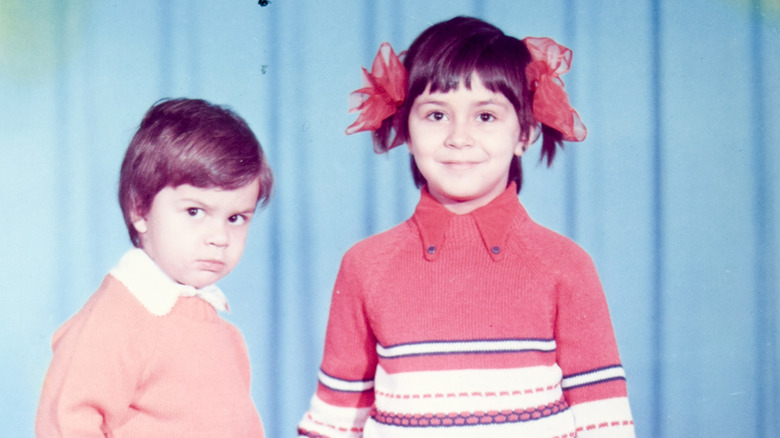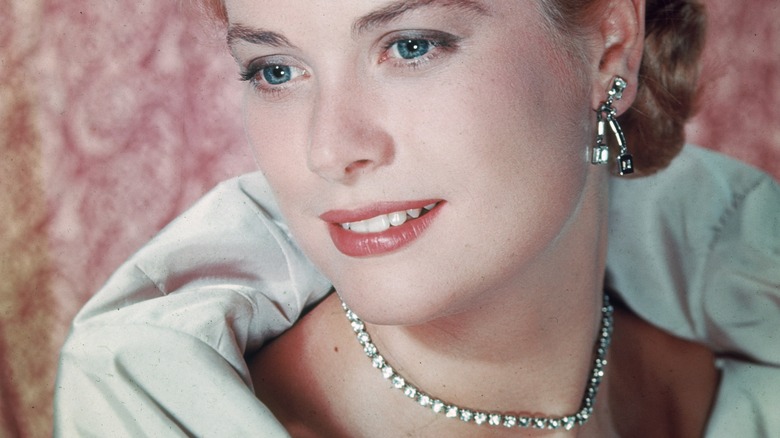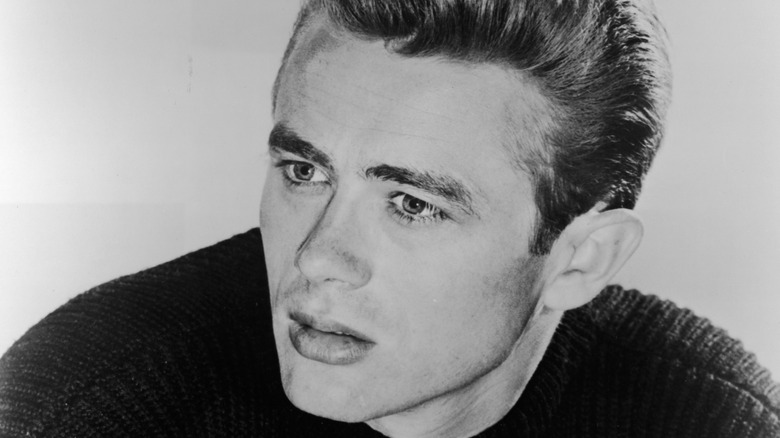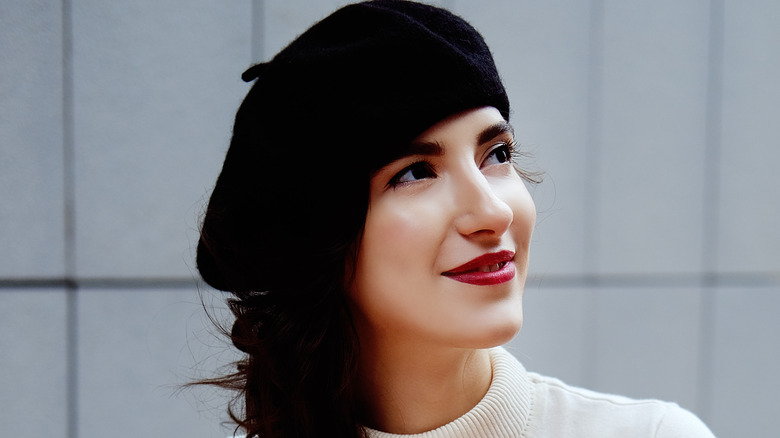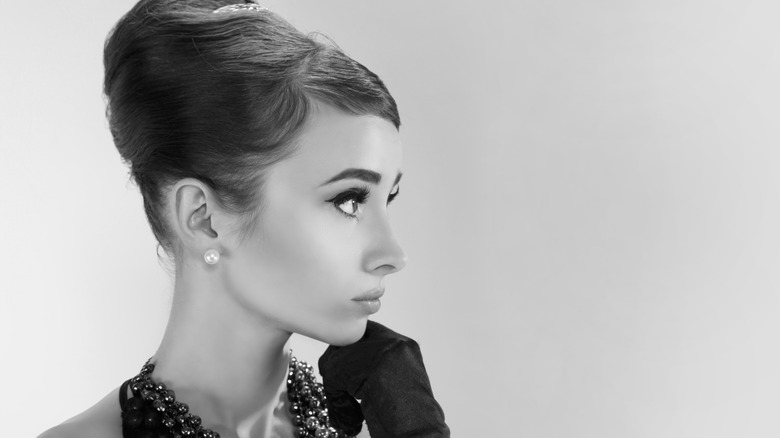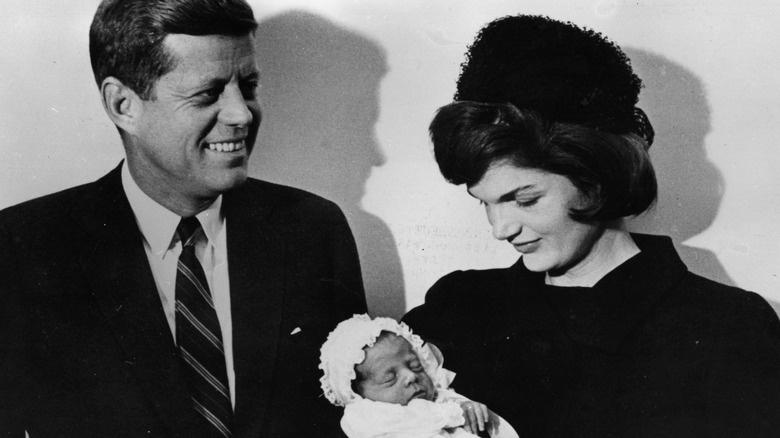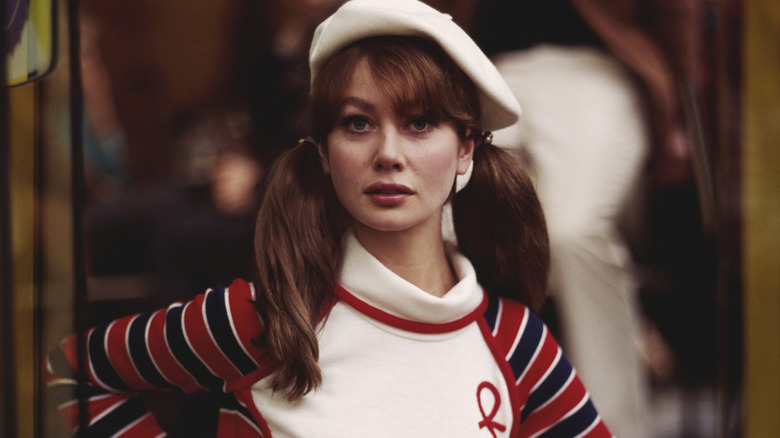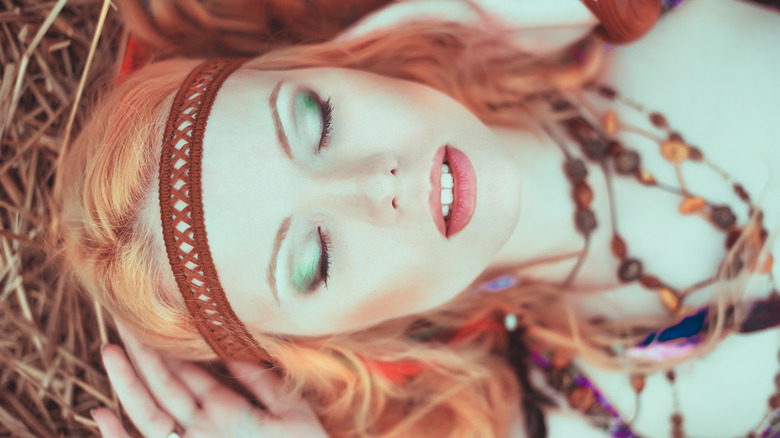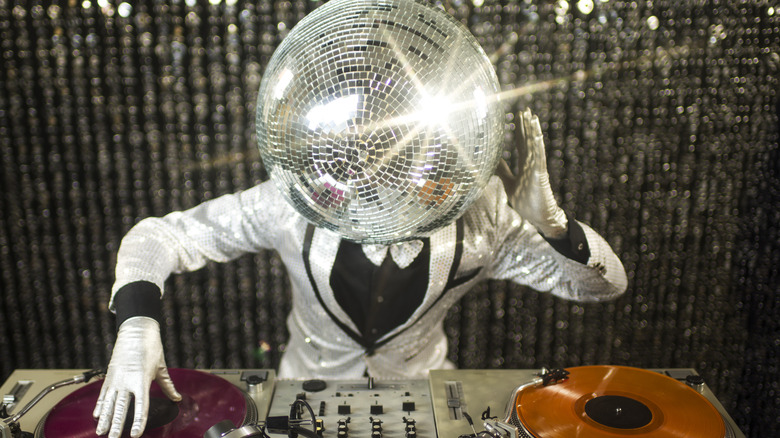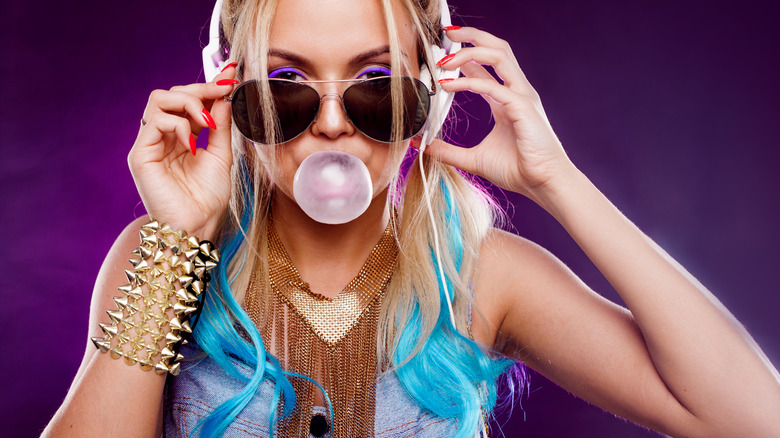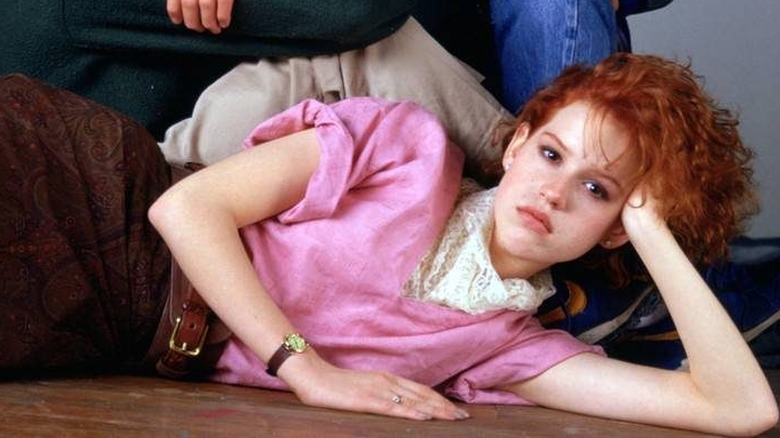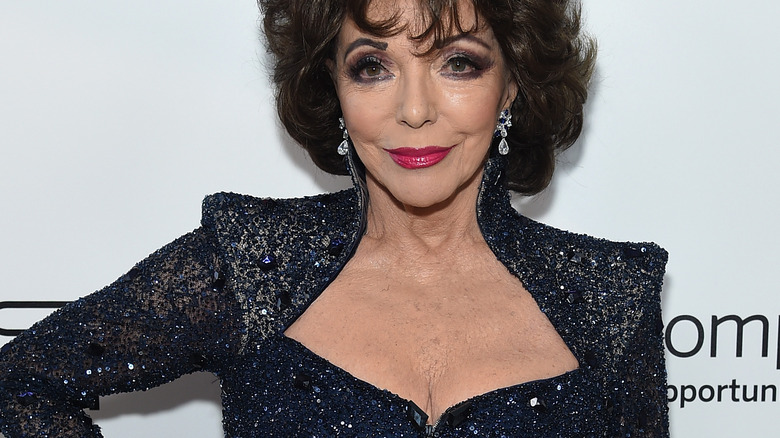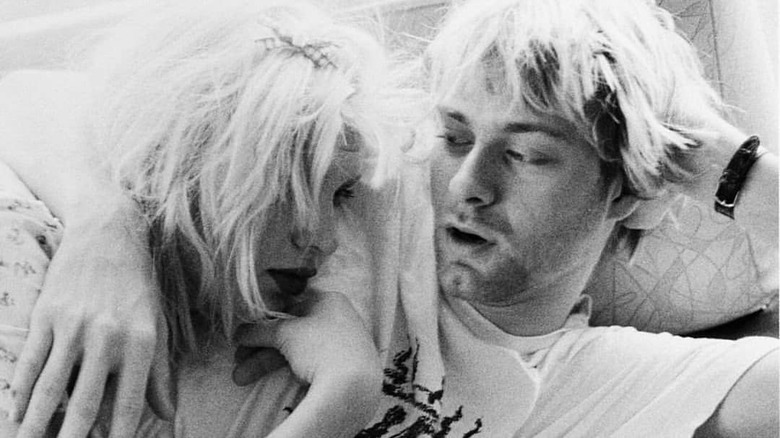The Most Popular Fashion Trend The Year You Were Born
Fashion trends, as hot as they are at the time, have a way of turning wonderfully whimsical in hindsight. Who could forget the Flashdance inspired legwarmers craze of the '80s? Or the iconic grunge uniform of flannel shirts, or riot-grrrl-inspired baby doll dresses?
Then there are the looks that have turned bonafide sought-after vintage, like the poodle skirts and bobby socks (or sox, if you prefer) of the 1950s. Or the eternally appealing James Dean inspired "greaser look," complete with the jacket, the perpetual comb in the back pocket, and the iconic pack of cigarettes rolled up into the sleeve of a white T-shirt. ("Greased Lightning," anyone?).
Whatever fashion era you hail from (or whatever fashion era you aesthetically prefer), revisiting the fads of yore is always a pleasure. As the musician Joe Jackson said, "nostalgia is a recreational drug," so turn on, tune in, and drop in to the good clean fun of style-crazes past.
1953-1955: Long white gloves, elegant lines, and red lipstick
Dubbed by Vogue as "the golden age of haute couture," the early to mid '50s were a time of glamour and elegance — think of the classic "debutante" look made iconic by Grace Kelly in 1954's Rear Window and 1955's To Catch a Thief. With her long white gloves, impeccably tailored skirts, upswept fair hair, timeless red lipstick, and breathtaking cocktail gowns, Kelly embodied sophistication and intellect.
Then, of course, there was Marilyn Monroe in 1953's Gentlemen Prefer Blondes, with her unforgettable ensemble of jeweled choker, pink satin, and similarly scarlet lips in the "Diamonds Are a Girl's Best Friend" number. Dior, Balenciaga, Givenchy — it was a trailblazing era for high-end fashion designers, a kind of ongoing aesthetic cocktail party where Chanel #5 and the classic pearl necklace were just as popular with the average American housewife as they were with Hollywood's elite (just ask June Cleaver, who would come along a few years later, still sporting the same look).
As Sarah Jessica Parker put it in Vogue's mini-documentary on the era, "Two silhouettes prevailed: the 'new look' hourglass, that featured a full skirt and a stem-like middle, and a glove-fitted slim line that emphasized a tiny midriff." In other words, the look of the day may have been a continuation of 1940s "old Hollywood" glamour, but things were also starting to move in a new, groundbreaking direction.
1953-1955: Greaser outlaw glamour
As always, the fashion trends of the '50s were primarily created for and embodied by women. But ponytail-sporting, poodle-skirted Elvis-era Americana had an important male counterpart with the iconic "greaser" look that began to pop up in the wake of films like 1955's Rebel Without a Cause. Starring alongside a beautiful, tormented, bobby-soxed Natalie Wood, an equally (and just as appealingly) angsty James Dean burst onto the scene with his jeans, white T-shirt, red jacket, and eternal cigarette, surrounded by fabulous "disaffected youth" hoodlums in black leather jackets.
It was a look that would later be exemplified in '50s-homage musicals like Grease, where the boys all had Lucky Strikes rolled into the sleeves of their T-shirts, and everyone was always taking a comb out of their back pocket to slick back their hair — when they weren't fashionably flashing switchblades, that is. "Greaser" was a term originally used to describe elements of "outlaw Latino culture," but like so many other things, it was quickly adopted by Hollywood.
1957-1959: Beatnik chic
The era also saw the emergence of Beatnik chic, which was popularized in the slew of publicity that followed the debut of Jack Kerouac's On the Road in 1957. Thereafter, there was a bongo drum in every cold water flat in Manhattan, and berets and black leggings became the stuff of fashion legend.
Sweaters and "torpedo bras" also started to represent a sort of latter-day "gangster's moll" chic. B-movie gems like 1958's High School Confidential were all the rage at the Drive-Ins. and every poem was accompanied by jazz music and enthusiastic snapping (in lieu of applause) from the audience. Years later, Pia Zadora and Ric Ocasek paid homage to the era in John Waters' 1988 camp classic Hairspray, a world where ironed hair, marijuana smoke, and all-black stood in direct opposition to the gaudily towering tresses of the emerging 1960s.
Kerouac himself would famously eventually come to hate the Beatniks, calling some them "hoodlums and communists" in one memorably drunken appearance on William F. Buckely's Firing Line. But as the media would have it, the look was here to stay.
1960-1964: Breakfast at Tiffany's and Surfer Girl Chic
The earlyish '60s were a time of campy fun: In 1961's Breakfast at Tiffany's, Audrey Hepburn momentarily popularized long-handled cigarette holders, tiaras, and little black dresses. In short, she was everything a rich debutante with a poodle stuffed into her handbag was supposed to be. Except for the fact that the animal in question was an adorable orange cat instead of a canine.
The mid-'60s brought us the retro "surfer girl" chic made famous by Annette Funicello in films like 1965's Beach Blanket Bingo, a distinct homage to films like 1959's plucky Malibu wave-riding ingenue Gidget. Hair started to flip up, ala the "Bubble Flip," and get perkier and more cheerful. And Patty Duke, in the hit series that bore her name, was busy making wide headbands a household name.
Also, no teenage girl was complete without a hula hoop rotating around her person, as ingenue Sue Lyon demonstrated in 1962's Lolita.
1960-1965: Pillbox hats and Jackie Kennedy chic
The early '60s were also, of course, an era that was captivated by the Kennedys, and in particular by the glamorous trends set forth by beautiful first lady Jackie Kennedy. For the duration of her husband's presidency (and beyond) Jackie dazzled in pillbox hats, shimmering cocktail dresses with bows, her own white wedding gown, and, of course, Chanel suits.
Pillbox hats, in particular, were all the rage because of America's most glamorous First Lady, even though Jackie supposedly told her personal shopper of the era that she felt "absurd" wearing headdresses in general, and worried that the hats would "pauperize" her (whatever that means).
Finally, she made what was perhaps her most iconic, poignant and tragic fashion statement of all in the pink suit — still splattered with her husband's blood — that she wore at the swearing in of Vice President Lyndon B. Johnson as President's Kennedy's successor the day after his assassination.
1965-1967: Carnaby Street chic
What can one possibly say about the fashion of the late '60s that hasn't been said before? It was a groundbreaking time for style — from the London inspired "Carnaby Street" look popularized by iconic designer Mary Quant, who invented the minidress, to the long false eyelashes, Go-Go boots, and leggy-tights look of "It" girls Twiggy and Warhol muse Edie Sedgwick.
In 1966, there was director Michelangelo Antonioni's film Blow-Up, which was literally about the fashion industry, among other, more ominous things. In it, European superstars Veruschka, Vanessa Redgrave, and Sarah Miles rolled around on the floor for photographers in all sorts of skimpy avant-garde creations, and the artsy seeds of today's Alexander McQueens and co. were sowed.
In the meantime, Day-Glo, paisley, and white lipstick dominated the scene, and Jane Fonda's trippy Space Age attire had people's pupils dilating and spinning from the effects of the psychedelic fashion-fabulousness that was 1968's Barbarella.
1967-1969: Hippies
Legendary Vogue editor Diana Vreeland once observed that "Only twice in this century has the youth been dominant. The '20s and the '60s." And indeed, the last few years of the hippie era were every bit as influential as the flapper dresses and bobbed hair of the Jazz Age had been.
The late 60s gave us the Summer of Love, the Monterey Pop Festival, and the release of the Beatles' Abbey Road, and music began to define fashion as much as activism had already begun to. Janis Joplin, with her decadent fringed vests and psychedelically textured bell bottoms, was a style icon; as, on a much darker end of the spectrum was her contemporary Jim Morrison, with his silver conch belts, perpetually unwashed leather pants, and angstily wild-haired sexiness.
Woodstock also singlehandedly ushered in a multitude of fashion statements of its own. From American flag pants (or shirts, ala Abbie Hoffman) to smocked tops to the "natural" look of jeans and no shirts at all (or at least no bras at all), people were letting it all hang out, and bare flesh accented by nothing but flower crowns catapulted us momentarily back to Medieval Pagan Maydays. Ken Kesey and his band of Merry Pranksters made a huge impact, too, with their colorful, traveling circus-like ensembles, which paved the way for the Burning Man aesthetic of today.
1970-1979: Disco, Lycra, and flamboyance
The 1970s ushered in a fabulously liberating decade not unlike the '60s, where partying, activism, and fashion combined to make an unforgettable statement. 1977 brought us Saturday Night Fever, which helped disco become a sensation. Glitter and sequins took top honors, via both David Bowie in his Ziggy Stardust phase, and the likes of Donny and Marie Osmond, the siblings who were always decked out in something like matching Lycra cowboy suits or satin bell-bottoms. Elton John also flamboyantly sported everything from rhinestone-studded evening wear to funky sunglasses to bizarre animal costumes to Vegas lounge-like masterpieces.
Then there was Farrah Fawcett, who was as much about swimsuit-tops and gold lame or silk dresses as she was about hair. And speaking of the above-mentioned Lycra, stars like Blondie's Debbie Harry managed to popularize its skin-tight shininess just as much as they managed to popularize glossy lips. And lets not forget the wrap dresses of designer Diane von Furstenberg.
Amid all that flamboyance, there was also the turtlenecked and sunglasses "no makeup" chic of the women's movement, as ushered in by Gloria Steinem and company.
1983-1985: Material Girl chic
Though the early 1980s were essentially a continuation of '70s fashion, pop star Madonna changed everything with her emergence on the scene in the form of 1983's hit single "Burning Up." Over the course of the next few years, the hits just kept coming, and Madonna ended up incarnating most of the major fashion statements of that time.
To her thousands of fans, this meant the frilly ankle socks and high heels of "Borderline", the jelly bracelets, rosaries, and hair scrunchie-things of Desperately Seeking Susan, and the dark-lipsticked, leopard-print wearing, gum-chewing-but-sexy kind of ebullience that came to embody the 80s urban bad girl look. Cyndi Lauper also did her part, with her electrifyingly-colored hair and ragbag, Steampunk-esque chic: How could forget that fabulous video for "Time After Time?"
However, the '80s were, let's face it, arguably the worst decade for fashion in the history of the world. We saw a lot of hideous trends, like fluorescent teeny-bopper clothing, the meth dealer-esque look of Spandex pants accompanied by fanny packs and pagers, and mullets. Though other things, like the legwarmers popularized in 1983's Flashdance, were actually kind of cool — in a New York performing arts student kind of way.
1984-1987: Brat Pack chic
The pop-cultural identity of the 80s — at least for young people — was also largely defined by director John Hughes, who brought us Weird Science, Sixteen Candles, and Ferris Bueller's Day Off, just to name a few. From this "disaffected youth" film renaissance sprang Brat Pack chic, as embodied primarily by Molly Ringwald, with her bobbed red hair and pouty pinkish lips.
From the rosy tops and suede brown boots of The Breakfast Club to the funky hats, brooches, and vintage ensembles of Pretty in Pink, Ringwald became a style icon to millions of teenage girls — and was arguably even as influential as Madonna, in her own way.
Nevertheless, Brat Pack chic was Brat Pack chic across the board. Whether you were a nerd in your Izod shirt and googly glasses, a jock in your tennis whites and single earring, or a brooding goth pouring Capn. Crunch and Pixy Stixs into your sandwich, you were equally fashionable, as far as being an emblem of the times went.
1987-1989: Shoulder pads and power suits
In the mid to late '80s, shoulder pads became a major thing, as popularized by Joan Collins and Linda Evans in Dynasty. Power suits, like the weird futuristic ones donned by the likes of Grace Jones, were also a smash hit. And then there were the shiny red lips and heavily painted eyes of many a video of the times, like Robert Palmer's "Simply Irresistible" or "Addicted to Love."
Almost every girl had one of those Syd Brak posters in her room, and stirrup pants came in all colors and patterns. Too, powerhouse '80s perfumes like Opium and Giorgio reigned supreme — even though, as scents, their fashion appeal took place off-camera, so to speak. Nevertheless, no power suit was complete without a power fragrance.
Princess Diana also helped to popularize the shoulder-pad trend, as did Melanie Griffith in movies like Working Girl. And let's not forget pouffy taffeta skirts, tube tops, Guess Jeans, and Jazzercise fitness wear as haute couture.
1990-1993: Grunge, Babydoll dresses, and brown lipstick
After the fashion-horrors of the '80s came a new renaissance in the form of the '90s, which — let's admit it — were a fabulous time to be alive in. Music, from Nirvana to Hole to the Pixies to PJ Harvey, was bursting out all over like a ferocious springtime, and the riot grrrl ethos was in full swing. In the early to mid 90s, Courtney Love ("Miss World") and Kat Bjelland of Babes in Toyland ("Bruise Violet") popularized the babydoll dress (aka "Kinderwhore") look, which involved childish clothing and a lot of smeared red lipstick, all taking place amid churning guitars and magnificently existential wailing.
Gothy brown lipstick was also a thing, as were, of course, combat boots, flannel shirts, and the general "Seattle thrift store" style inadvertently popularized by Kurt Cobain, who was really just wearing what he would have worn anyway. But whether its ambassadors were reluctant fashion icons or not, the influence of '90s fashion is here to stay.
